Jeep Grand Cherokee vs Land Rover Defender – Which car suits you better?
Everyday use, family trips or long-distance drives – here’s where the differences show.
Discover whether Jeep Grand Cherokee or Land Rover Defender fits your lifestyle better.
Costs and Efficiency:
Looking at overall running costs, both models reveal some interesting differences in everyday economy.
Land Rover Defender has a convincingly advantage in terms of price – it starts at 57900 £, while the Jeep Grand Cherokee costs 85600 £. That’s a price difference of around 27771 £.
Fuel consumption also shows a difference: Jeep Grand Cherokee manages with 2.90 L and is therefore clearly more efficient than the Land Rover Defender with 6 L. The difference is about 3.10 L per 100 km.
As for range, the Land Rover Defender performs barely noticeable better – achieving up to 48 km, about 3 km more than the Jeep Grand Cherokee.
Engine and Performance:
Power, torque and acceleration say a lot about how a car feels on the road. This is where you see which model delivers more driving dynamics.
When it comes to engine power, the Land Rover Defender has a convincingly edge – offering 635 HP compared to 380 HP. That’s roughly 255 HP more horsepower.
In acceleration from 0 to 100 km/h, the Land Rover Defender is clearly quicker – completing the sprint in 4 s, while the Jeep Grand Cherokee takes 6.30 s. That’s about 2.30 s faster.
In terms of top speed, the Land Rover Defender performs slightly better – reaching 250 km/h, while the Jeep Grand Cherokee tops out at 210 km/h. The difference is around 40 km/h.
There’s also a difference in torque: Land Rover Defender pulls to a small extent stronger with 750 Nm compared to 637 Nm. That’s about 113 Nm difference.
Space and Everyday Use:
Whether family car or daily driver – which one offers more room, flexibility and comfort?
Seats: Land Rover Defender offers noticeable more seating capacity – 8 vs 5.
In curb weight, Land Rover Defender is minimal lighter – 2300 kg compared to 2434 kg. The difference is around 134 kg.
In terms of boot space, the Land Rover Defender offers clearly perceptible more room – 786 L compared to 520 L. That’s a difference of about 266 L.
In maximum load capacity, the Land Rover Defender performs minimal better – up to 2078 L, which is about 74 L more than the Jeep Grand Cherokee.
When it comes to payload, Land Rover Defender clearly perceptible takes the win – 819 kg compared to 641 kg. That’s a difference of about 178 kg.
Who wins the race?
The Land Rover Defender proves to be outperforms in nearly all aspects and therefore becomes our DriveDuel Champion!
Land Rover Defender is the better all-rounder in this comparison.

Land Rover Defender
Jeep Grand Cherokee
The Jeep Grand Cherokee impresses with its blend of rugged capability and refined elegance, making it a versatile choice for both off-road adventures and urban settings. Its spacious interior is complemented by high-quality materials and advanced technology, ensuring comfort and connectivity on every journey. With a strong reputation for performance, this SUV continues to uphold Jeep's legacy of delivering vehicles that are both powerful and reliable.
details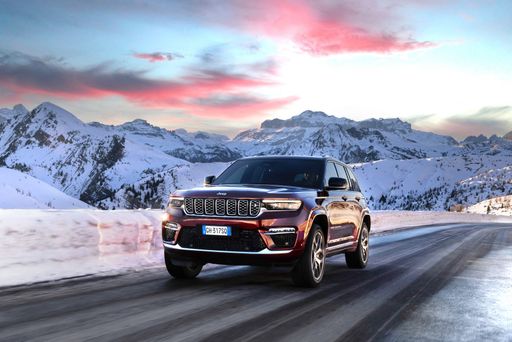 @ media.stellantis.com
@ media.stellantis.com
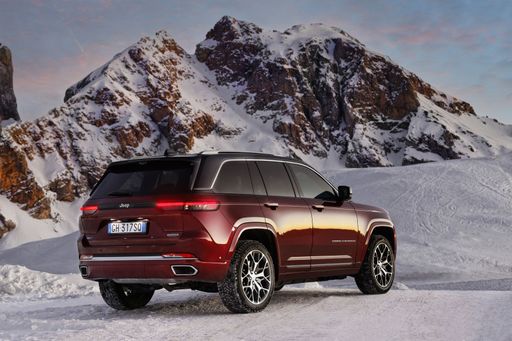 @ media.stellantis.com
@ media.stellantis.com
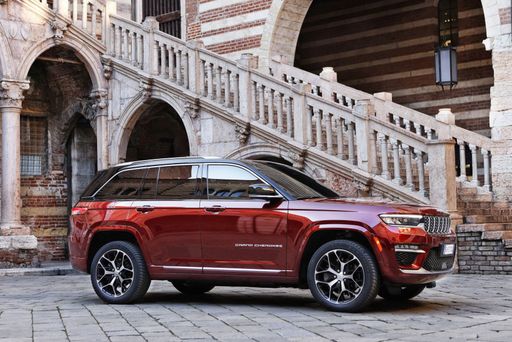 @ media.stellantis.com
@ media.stellantis.com
 @ media.stellantis.com
@ media.stellantis.com
Land Rover Defender
The Land Rover Defender boasts a rugged design that seamlessly blends traditional aesthetics with modern innovation, making it a true icon in the world of off-road vehicles. Its performance capabilities are matched by a luxurious interior, offering comfort and cutting-edge technology for drivers and passengers alike. Whether tackling rough terrains or cruising through city streets, the Defender exudes versatility and reliability, maintaining its reputation as a robust yet refined companion for any adventure.
details @ media.landrover.com
@ media.landrover.com
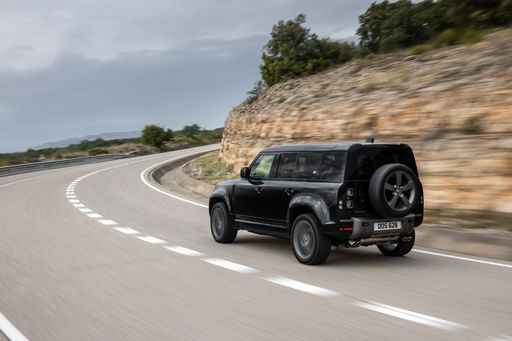 @ media.landrover.com
@ media.landrover.com
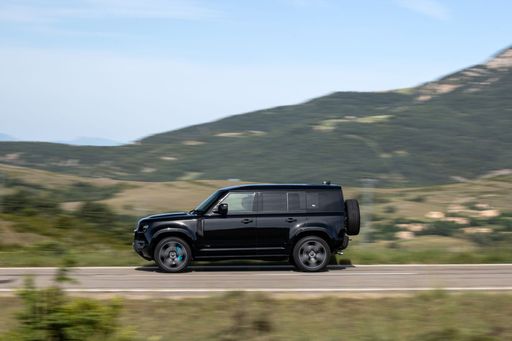 @ media.landrover.com
@ media.landrover.com
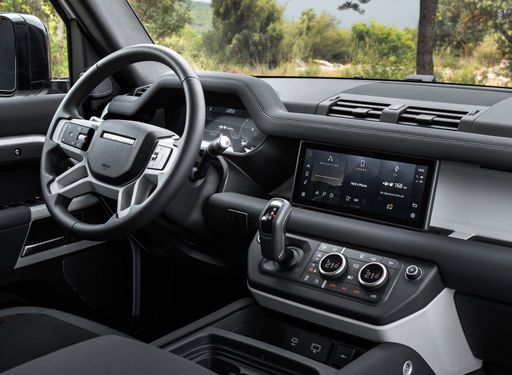 @ media.landrover.com
@ media.landrover.com
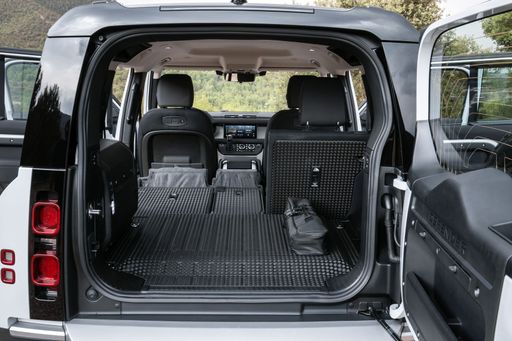 @ media.landrover.com
@ media.landrover.com
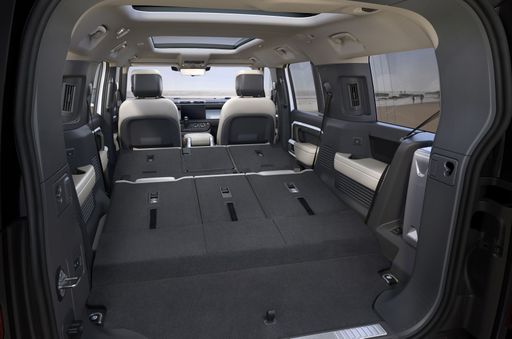 @ media.landrover.com
@ media.landrover.com

|

|
|
|
|
Costs and Consumption |
|
|---|---|
|
Price
85600 £
|
Price
57900 - 172000 £
|
|
Consumption L/100km
2.90 L
|
Consumption L/100km
6 - 14.4 L
|
|
Consumption kWh/100km
-
|
Consumption kWh/100km
-
|
|
Electric Range
45 km
|
Electric Range
48 km
|
|
Battery Capacity
-
|
Battery Capacity
15.40 kWh
|
|
co2
65 g/km
|
co2
135 - 324 g/km
|
|
Fuel tank capacity
72 L
|
Fuel tank capacity
89 - 91 L
|
Dimensions and Body |
|
|---|---|
|
Body Type
SUV
|
Body Type
Off-Roader
|
|
Seats
5
|
Seats
2 - 8
|
|
Doors
5
|
Doors
3 - 5
|
|
Curb weight
2434 kg
|
Curb weight
2300 - 2745 kg
|
|
Trunk capacity
520 L
|
Trunk capacity
293 - 786 L
|
|
Length
4914 mm
|
Length
4323 - 5358 mm
|
|
Width
1968 mm
|
Width
2008 mm
|
|
Height
1858 mm
|
Height
1967 - 1995 mm
|
|
Max trunk capacity
2004 L
|
Max trunk capacity
1263 - 2078 L
|
|
Payload
641 kg
|
Payload
494 - 819 kg
|
Engine and Performance |
|
|---|---|
|
Engine Type
Plugin Hybrid
|
Engine Type
Petrol, Diesel MHEV, Plugin Hybrid, Petrol MHEV
|
|
Transmission
Automatic
|
Transmission
Automatic
|
|
Transmission Detail
Automatic Gearbox
|
Transmission Detail
Automatic Gearbox
|
|
Drive Type
All-Wheel Drive
|
Drive Type
All-Wheel Drive
|
|
Power HP
380 HP
|
Power HP
200 - 635 HP
|
|
Acceleration 0-100km/h
6.30 s
|
Acceleration 0-100km/h
4 - 10.2 s
|
|
Max Speed
210 km/h
|
Max Speed
175 - 250 km/h
|
|
Torque
637 Nm
|
Torque
500 - 750 Nm
|
|
Number of Cylinders
4
|
Number of Cylinders
4 - 8
|
|
Power kW
280 kW
|
Power kW
147 - 467 kW
|
|
Engine capacity
1995 cm3
|
Engine capacity
1997 - 5000 cm3
|
General |
|
|---|---|
|
Model Year
2024
|
Model Year
2025
|
|
CO2 Efficiency Class
B
|
CO2 Efficiency Class
G, D
|
|
Brand
Jeep
|
Brand
Land Rover
|
Is the Jeep Grand Cherokee offered with different drivetrains?
Available configurations include All-Wheel Drive.
The prices and data displayed are estimates based on German list prices and may vary by country. This information is not legally binding.
